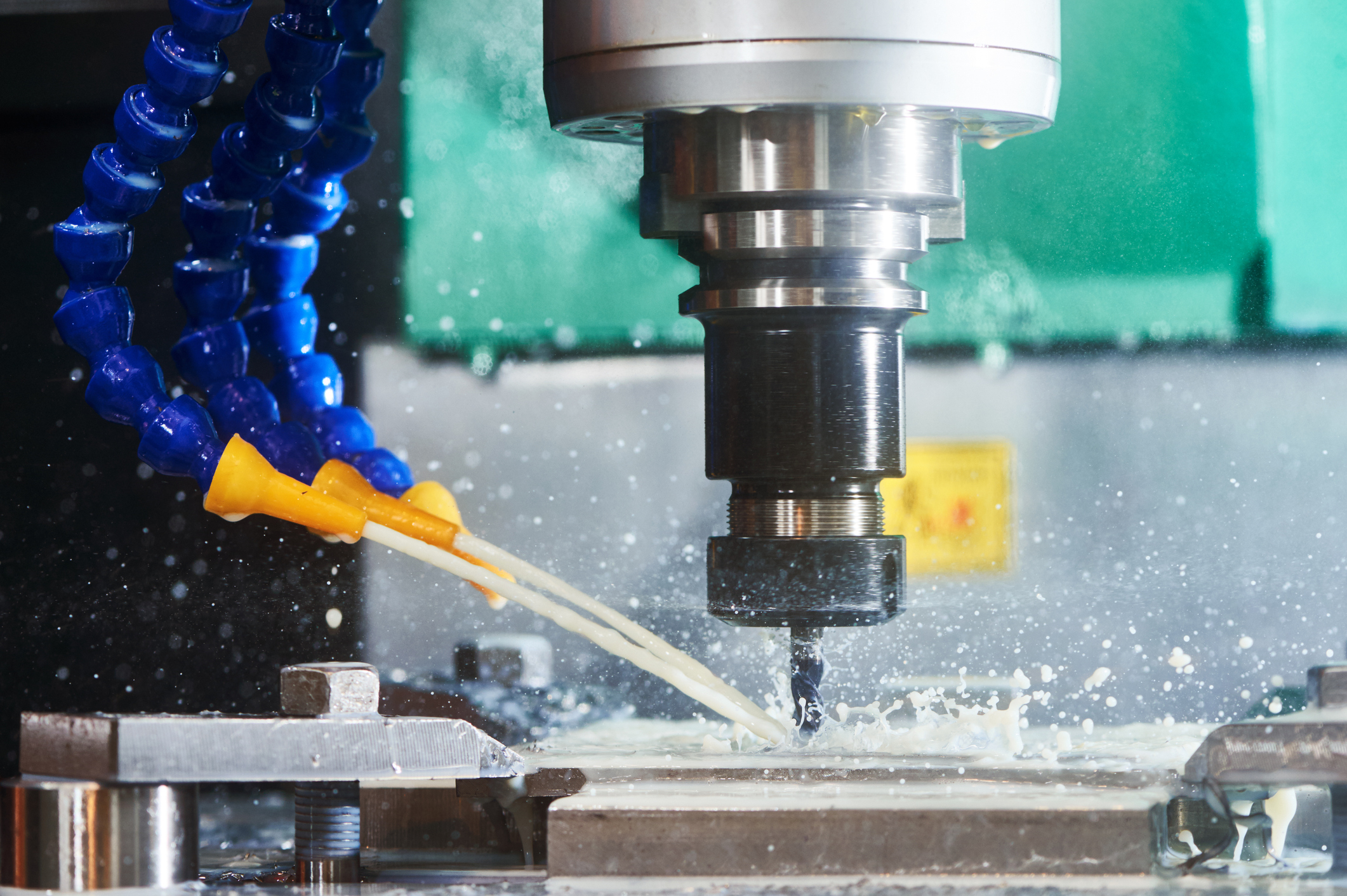

Our Processes
Benefits of MQL
MQL stands for Minimum Quantity Lubrication. Using this machining process, we can ensure that the lubrication exactly follows the amount detailed for the specific piece. Our customers receive material that arrives clean and free from any foreign coolant or particle contamination.

Prepping
Any basic operation performed on a part before final machining. Prepping operations don’t finish any critical features of the part. Sunshine provides several types of prepping operations:
- Profile – Simple outline of part. Normally roughly within .100″ of finished part. Tooling tabs can be added.
- Profile with Holes – Profile with holes added.
- Profile with Holes and Face – Facing one or both sides of part.
- Dovetail – Forms an especially strong joint because of the trapezoidal shape the tails form. Usually a groove is roughed out then the base and sides are finished.

Types of Holes
- Drilled Hole – This is a basic hole characterized by the way the hole is made and what tools are required. Normal diameter tolerance is ± .010.
- Counter Bore – Counter boring is usually used so that the head of a bolt sits flush with the surface of a piece. In this process, the tool broadens the top of a hole to match the diameter of the tool.
Normal tolerances are:
- Small hole diameter tolerance of ±.010
- Larger hole diameter tolerance of -.010 +.030 and depth ±.050
- Tapped Hole – Cuts an internal thread into an existing hole..
- Through Hole – This type of hole goes completely through the part.
- Blind Hole – A blind hole goes to a certain depth but doesn’t go through to the other side of the piece.
- Locating Hole – A hole used for locating the material to fixture. Normally has a tighter location and diameter tolerance. The proper location of a piece is imperative for the part to be machined correctly. So, in design, referencing the cutter and the piece must be meticulously judged.

Rough Shape
Roughing cuts remove bulk material from the workpiece, producing shapes close to the finished dimensions but leaving some material for the final working. We can rough parts out to remove the bulk of material, saving shipping weight and customer’s machine time. We can machine to customer supplied model or can design rough shape for customer approval.

Facing
Facing is performed by removing metal to produce a flat surface. Sunshine can face one or both sides of the material.

Engineering
Sunshine works with our customers to aid in the manufacturing process any way that we can. By working directly with your engineers, Sunshine can supply the best product in the most efficient way possible.

Types of Files
The best file type is usually the native file. Sunshine has the ability to open and view many different file types.
- Native File – A file that is saved in the original format that it was created in.
- Cad Data – A file that contains 2D or 3D information deemed necessary for creating the part.
- DXF/DWG (.dxf, .dwg) – This is 2D print that can be used for most of the profile prepping operations and dovetail prep.
- IGES (.iges) – Generic way of transferring 2D or 3D models.
- STEP (.stp) – The preferred method for receiving 3D models.
- Parasolid (.x_t) – Method for receiving 3D models.
- Solidworks (.sldprt) – Native SolidWorks file. Preferred way of receiving.
- Catia V5 (.catprt, .catproduct) – Native Catia V5 file. A way to receive 2D and 3D models.
- Catia V4 (.model) – Native Catia V4 file. A way to receive 2D and 3D models.
- Mastercam (.mcx) – Native Mastercam X files.


